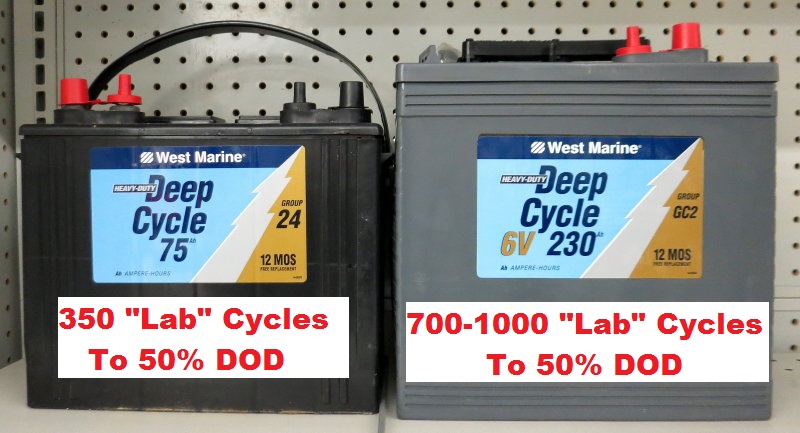yes, dont overcomplicate doing too much at a time, 2 batteries at a time if you are 24 volt system. if plates are showing fill the cells to 1/2 over the plates as acid mix grows in volume as the specific gravity comes up. a good cell should come up to 1.260 s.g. but what is important is that all cells will be within .020 of each other, any cell that is consistently below 1.100 is dust.....that battery is kaput... my L-16,s are all within .010 of each other....the 2 sets are not the same. The primary set is Rolls-Surette S-530 solar batteries, the other set is Interstate traction batteries made for those floor sweepers that you see in the big grocery stores, way less expensive than Rolls less than 1/2
Here is my comparison of lead acid batteries
Car starting battery......should start your car in 15 seconds, after that the alternator does all the work, the battery is along for the ride, it contributes nothing
Golf cart and other traction battery.....Its job is all day long with few breaks, it gets no help from the alternator and it will not see the charger for many hours unless you get out and push......lol
Here is my comparison of lead acid batteries
Car starting battery......should start your car in 15 seconds, after that the alternator does all the work, the battery is along for the ride, it contributes nothing
Golf cart and other traction battery.....Its job is all day long with few breaks, it gets no help from the alternator and it will not see the charger for many hours unless you get out and push......lol



